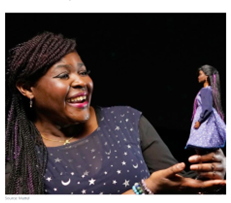How did Barbie make ‘inclusion’ a part of their DNA?
When was the last time you played with a Barbie doll? Not the counterfeits, but the real Barbies. A walk down the memory lane, isnt it?
Barbie - a company that proudly inspired our younger selves ‘to be anything’ and brought alive the first encounter with fashion! It did to me. And honestly, it continues to inspire with every Barbie my daughter and I have added to our squad.
Barbie has changed over the years to be ‘inclusive’ and mirror the world around us. A journey that began in 1967 when it released its first Barbie of colour called 'Colored Francie'. But it was not until 2015 that Barbie made it their purpose to be more inclusive and relatable.
Pic courtesy: https://shop.mattel.com/pages/barbie-diversity-evolution


From live-action Christie to black Hispanic dolls, the collection includes representations of paleontologists, pilots, navy admirals, firefighters, presidents, and more. Barbie has strived to show girls they can be anything through a range of careers traditionally held by men. More recently, in line with their commitment to encouraging more women in STEM careers, Mattel honoured Scientist Dr. Maggie Aderin-Pocock with a Barbie Role Model for her cosmic achievements.

For me, at the heart of every Barbie toy is a radical ‘inclusion;’ something that sits with my ideology. Indulge me here; I see the world of Barbie come alive beautifully at workplaces. The kaleidoscope of characters, each representing diverse backgrounds and identities, reflects a utopian vision of a world where everyone is Barbie – an emblem of potential, strength, and beauty, irrespective of race or ability. And we, as women, more than anyone else, should imbibe this philosophy.
Companies have a social imperative to be inclusive, but it takes more than just good intentions to get this right. What will perhaps help is to be more natural and authentic in the approach; show people across the spectrum of humanity and not just a mere tick box exercise on DEI, and live true to their values.
What we often tend to forget is that inclusive environments foster a culture of innovation. And workplaces that reward employees for creativity and innovation (by which I am referring to creating new opportunities, new experiences, products, services, content, or processes) are better able to attract and retain talent.
Companies having the right talent to fuel their growth, coupled with women having the opportunities they desire for success, create a mutually beneficial scenario for both businesses and employees, ultimately contributing to the overall prosperity of the economy.
And for Mattel, may they continue to recognize the importance of authentically representing the world as children see it and inspire generations to come.
(Nisha Raman, Growth Officer, dentsu India)

